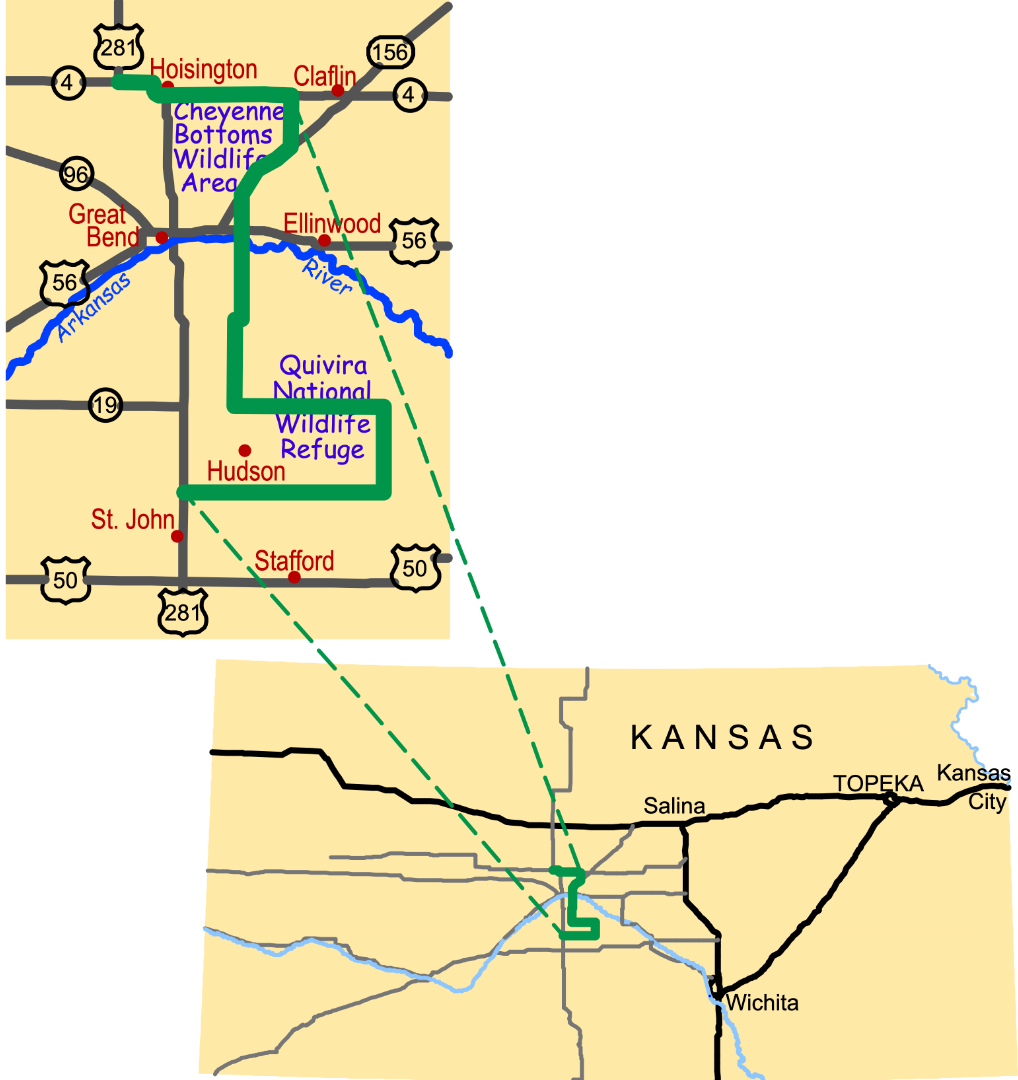Working...

Wild West Superhighway
Commerce on the Santa Fe Trail
In the 1800s, the Santa Fe Trail was the Interstate-70 of the American West, and Conestoga wagons were its freight-hauling tractor trailers. Between 1822 and 1879, the trail was a commercial thoroughfare between Missouri and Santa Fe, guiding wagons, stagecoaches, and military men to and from the southwestern frontier. During the 1860s and 70s, thousands of wagons carrying fortunes worth of goods rolled over the trail. In 1880, the railroad reached Santa Fe, and the days of the Santa Fe Trail came to an abrupt end.
Located at the trail's halfway point, this region was a key stop for travelers. Wagon trains found drinking water near the Peacock Trading Post at the Walnut Creek* Crossing. Nearby Fort Zarah* and Fort Larned (now a national historic site) protected wagon trains from tribal raids.
Welcome to the Wild West
In the 1870s, this region was the Wild West, a land of bison and wolves, of American Indians, settlers, cowboys, and cavalry. Great Bend was a new, rugged cowtown, with its rail depot the final destination for cowboys driving longhorns north from Texas.
Motion and Change
Start your exploration of the Santa Fe Trail at the Barton County Historical Society Museum and Village. An official Santa Fe Trail Interpretive Site, the museum houses period buildings, tools, housewares, and clothing, plus exhibits about American Indian and settler life, trading posts, and Fort Zarah.
Download the interpretive panel: Wild West Superhighway Panel located at the Barton County Courthouse-Jack Kilby Square-east side near the bandshell in Great Bend.
To listen to more information click on the Audio Tour
Go to the Gallery to view photographs contributed by visitors to the Byway.
* Walnut Creek Crossing and Fort Zarah
In 1855, William Allison and Francis Boothe built a trading post nearby at Walnut Creek Crossing, trading with American Indians and Santa Fe Trail travelers. When Walnut Creek flooded, wagon trains often had to make camp here for days, waiting to cross. In 1863, the trading post's new owner, Charles Rath, helped build a toll bridge over Walnut Creek. A party of Cheyenne and Arapahos burned the trading post in 1868, and today, only the foundations remain.
As American Indian raids on wagon trains increased, the U.S. military established the rustic outpost of Camp Dunlap (soon renamed Fort Zarah) near Walnut Creek Crossing in 1864. In 1866, buildings of locally quarried sandstone replaced the fort's canvas tents and dugouts. Fort Zarah was abandoned just three years later, in 1869, as military operations shifted to nearby Fort Larned.
One house [at Fort Zarah] is occupied by a fellow called Charley Rath, a notorious desperado, who has contributed not a little to the Indian disturbances which have occasionally broken out in this vicinity. He has sold revolvers, knives, and powder to the Kiowa...and yesterday he was warned off the Indian Reserve by Inspector General Davidson for selling whisky to soldiers and Indians
-Henry M. Stanley, newspaper correspondent, 1867
More Movement pages...
People of the Plains
Illusive Cities of Gold
The Settlers



